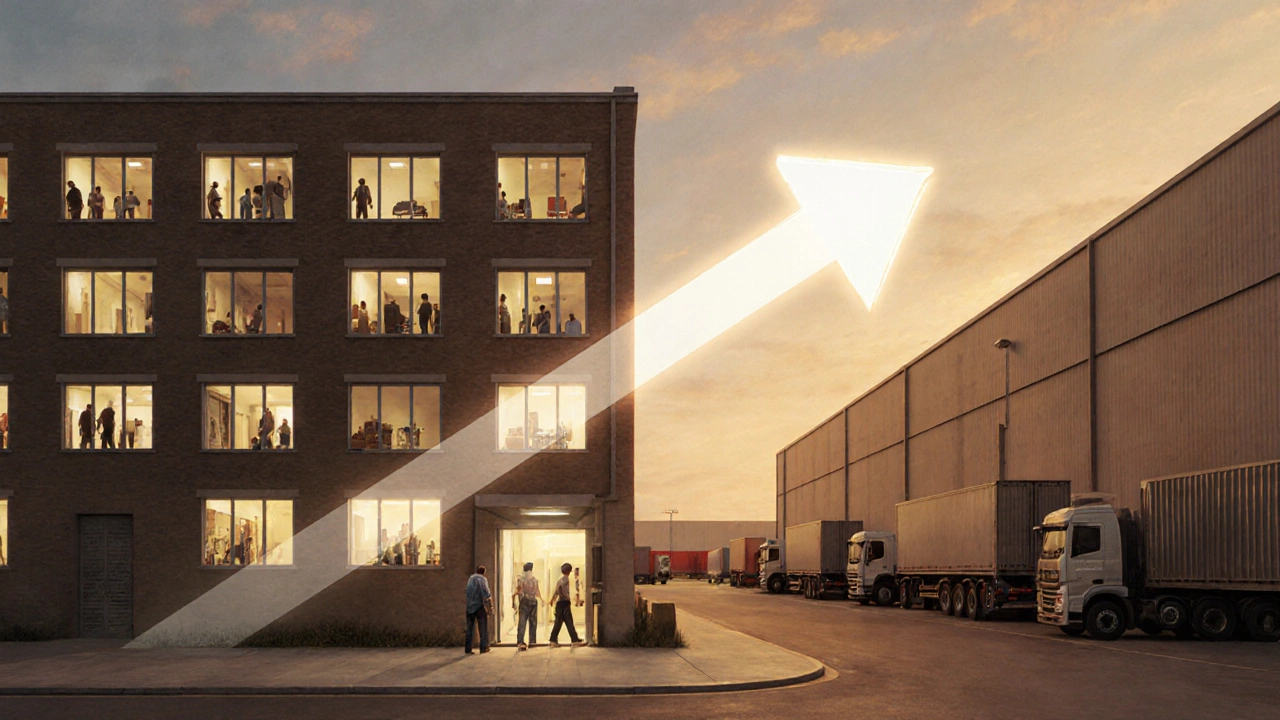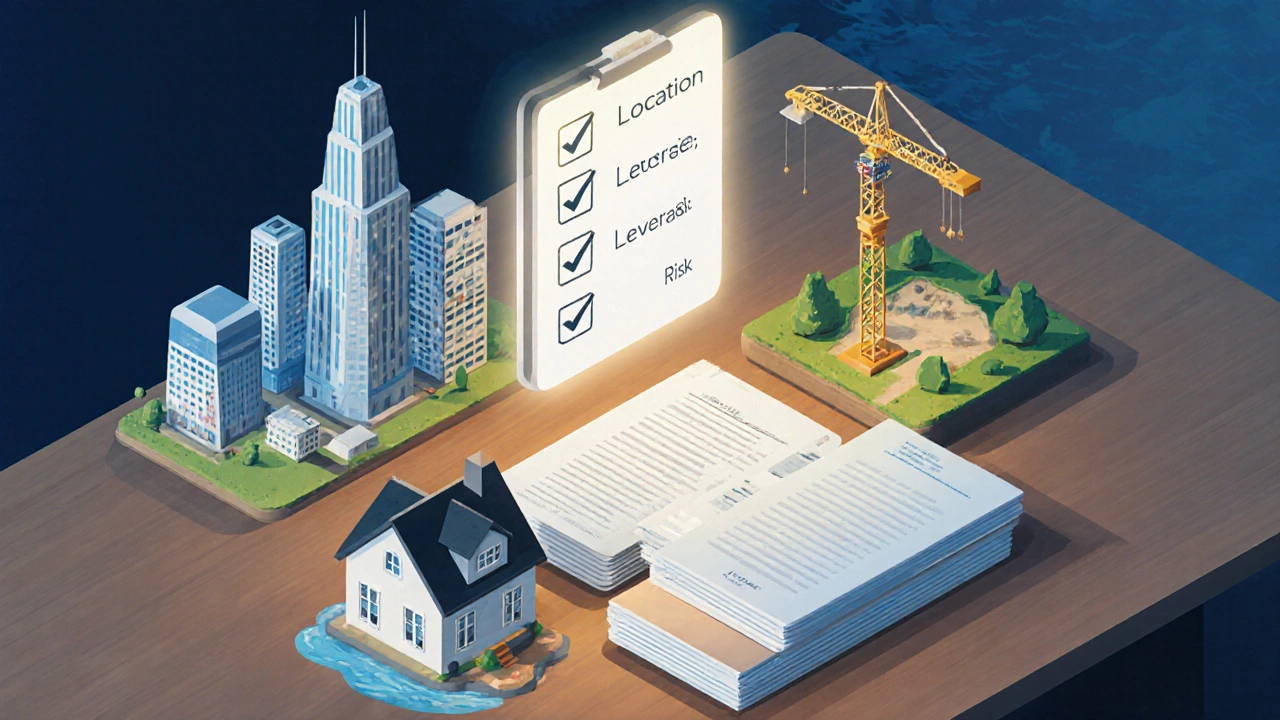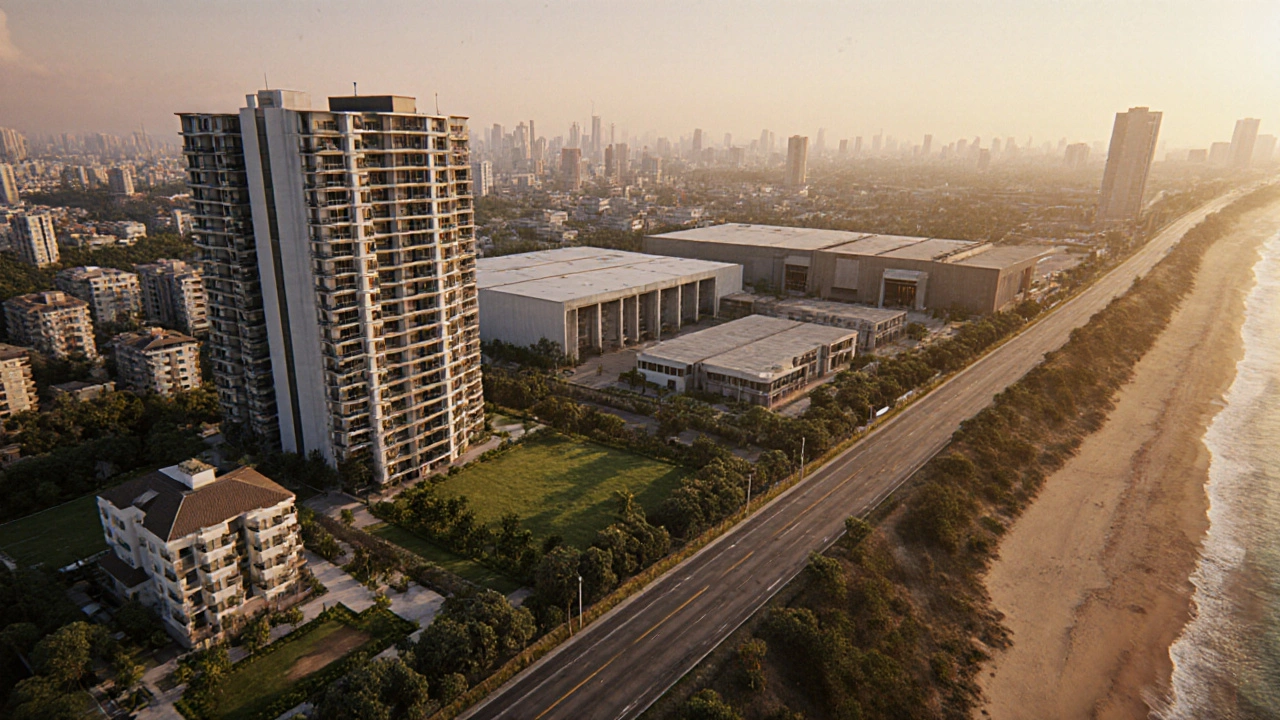Real Estate ROI Calculator
Calculate your potential return on investment for different property types using the formula:
ROI = (Annual Net Income + Appreciation - Expenses) ÷ Total Investment × 100
The calculator will show your ROI compared to the average ranges from the article.
Results
Enter your property details above to calculate your ROI
The average ROI range for this property type is -
Quick Summary / Key Takeaways
- Multi‑family apartment buildings and single‑family rentals have consistently out‑performed most other assets, delivering 8‑12% annual ROI in the last five years.
- Industrial and warehouse properties are catching up, especially with e‑commerce growth, offering 7‑10% ROI.
- Raw land provides the highest upside but also the highest risk; average ROI varies widely from 2% to 15% depending on location and development plans.
- Short‑term vacation rentals can hit double‑digit ROI in tourist hotspots, yet they demand active management and face regulatory headwinds.
- Use the checklist at the end to compare cash‑flow, appreciation, risk, and capital needs before committing.
When you hear investors brag about sky‑high returns, they’re usually talking about property ROI. But not every brick‑and‑mortar delivers the same payout. Some assets sit on the market and grow slowly, while others churn cash every month. This article breaks down the major property types, shows how their returns stack up, and gives you a practical way to decide which one fits your goals.
How to calculate real‑estate ROI
ROI, or return on investment, measures the profit you earn relative to the money you put in. In real estate the formula can look simple, but you need to capture the right cash flows. A basic calculation is:
ROI = (Annual Net Income + Appreciation - Expenses) ÷ Total Investment × 100
Where:
- Annual Net Income = rental income minus operating costs (maintenance, property management, insurance, taxes).
- Appreciation = increase in market value over the year.
- Expenses = financing costs, closing fees, and any capital improvements.
- Total Investment = down‑payment, closing costs, and any upfront renovation spend.
Most savvy investors run the numbers for a 10‑year horizon, because real‑estate cycles tend to smooth out over a decade. Plugging in realistic assumptions lets you compare apples‑to‑apples across very different property types.
Top property types by ROI
Below is a snapshot of how the main asset classes have performed from 2020 to 2024. The data pulls from the Australian Bureau of Statistics, CoreLogic price indexes, and a few global REIT reports.
| Property Type | Avg. Annual ROI | Typical Holding Period | Risk Level | Capital Needed (AU$) |
|---|---|---|---|---|
| Multi‑family apartment building | 9.4% | 7‑10 years | Medium | 1.5M‑5M |
| Single‑family rental | 8.1% | 5‑8 years | Medium | 600K‑1.5M |
| Industrial / warehouse | 7.8% | 8‑12 years | Low‑Medium | 2M‑6M |
| Vacant land (development‑ready) | 6.5% (wide range) | 10‑15 years | High | 500K‑3M |
| Short‑term vacation rental | 10.2% (peak locations) | 3‑6 years | Medium‑High | 800K‑2M |
| Office (core‑city) | 5.1% | 10‑15 years | Medium‑High | 1M‑4M |
| Retail (strip‑mall) | 4.8% | 10‑15 years | Medium‑High | 900K‑3M |
Two clear winners emerge: multi‑family apartments and single‑family rentals. They combine steady cash flow with solid appreciation, and they’re easier to finance than large‑scale industrial parks. However, if you can tolerate higher risk, raw land or a well‑located vacation rental can surpass them in certain markets.
Residential property: The workhorse of ROI
Residential assets cover both single‑family homes and multi‑family blocks. In Australia’s major cities, rental demand stays strong because of population growth and limited new housing supply. A typical single‑family rental in Sydney yields about 4‑5% net cash‑on‑cash, while the land component adds another 3‑4% a year in price appreciation.
Multi‑family buildings benefit from economies of scale: you spread management costs over several units, and vacancy risk drops because you rarely lose all tenants at once. Investors who hold a 10‑unit block for a decade often see total ROI around 9‑10%.

Industrial property: The quiet high‑flyer
Warehouses and distribution centers have become the darlings of logistics giants. The e‑commerce boom pushed demand for last‑mile delivery spaces, driving rents up 12% year‑over‑year in 2022‑2023. Because tenants sign long leases (5‑10 years) and maintenance costs are low, investors enjoy a stable cash stream.
Risk comes from market oversupply; when new industrial parks pop up, rent growth can slow. Still, with the right location-near major highways or ports-industrial assets reliably deliver 7‑10% ROI.
Land: High upside, high uncertainty
Buying vacant land is a gamble. If the site sits in a growth corridor, rezoning or subdivision can trigger a 20%‑plus price jump. But if zoning stalls or the developer pulls back, you might earn barely inflation‑level returns.
In Sydney’s outer suburbs, parcels of 2‑acre land bought in 2020 appreciated about 8% per year, while comparable plots in more remote regional areas only managed 2%‑3%.
Vacation rental: The active income generator
Short‑term rentals in tourist hotspots like Byron Bay or the Gold Coast can net 10%‑15% ROI when occupancy exceeds 70%. The math works because nightly rates are 3‑5× higher than long‑term rents.
However, you need to handle bookings, cleaning, and local licensing. Recent council restrictions in some suburbs cap the number of nights per year, which can chop returns dramatically. Treat this as a semi‑active investment-great if you enjoy the hustle, risky if you want set‑and‑forget.
Office space: The laggard
Post‑COVID, many companies embraced hybrid work, leaving office vacancy rates at 12% nationwide. Rents have barely kept up with inflation, translating to 4%‑6% ROI at best. Some premium CBD towers still perform well, but the sector as a whole now ranks low on the ROI leaderboard.

Retail strip‑mall: The fading star
Retail locations suffer from the shift to online shopping. Even well‑located strip‑malls see rent growth under 5% and higher tenant turnover. Advisors usually recommend only seasoned investors tackle retail, and even then expect ROI in the 4%‑6% band.
Key factors that swing ROI
- Location quality: Proximity to transport, schools, and employment hubs drives both rent and appreciation.
- Economic cycle: During boom years, all property types tend to rise, but the gap widens-industrial and land often surge the most.
- Leverage: Using a mortgage magnifies ROI but also risk. A 70% loan‑to‑value on a rental can boost cash‑on‑cash returns by 1.5‑2×.
- Management intensity: Self‑managed single‑family homes cut fees, while professional management adds cost but can improve occupancy for larger assets.
- Regulatory environment: Zoning changes, short‑term rental caps, and tax reforms can instantly alter projected returns.
Checklist: Evaluate a property’s ROI potential
- Gather the last 12 months of rent rolls and subtract operating expenses to get Net Operating Income (NOI).
- Research recent comparable sales to estimate annual appreciation rate.
- Calculate total investment: down‑payment, closing costs, and any upfront renovations.
- Plug numbers into the ROI formula and verify you’re above your target (usually 7%+ for active rentals).
- Run a sensitivity analysis: model 5% rent drop or 2% increase in vacancy to see impact on ROI.
- Check local zoning, future infrastructure plans, and any upcoming regulatory changes.
- Decide on financing: higher leverage improves cash‑on‑cash but raises break‑even occupancy.
If the property clears most of these hurdles, it likely belongs in the higher‑ROI camp. If any red flag pops up-especially around zoning or vacancy risk-consider a different asset class.
Next steps for investors
Start by narrowing your focus. New investors often get overwhelmed by the sheer number of property types. Pick one-say, a duplex in a growth suburb-run the ROI calculator, and compare the result against the table above. If the numbers stack up, move to financing and due‑diligence. If they fall short, test another type, like a small warehouse, and repeat.
Frequently Asked Questions
Which property type gives the highest long‑term ROI?
Historically, multi‑family apartment buildings deliver the best blend of cash flow and appreciation, averaging around 9‑10% annual ROI over a 10‑year horizon.
Can I achieve high ROI with a single‑family home?
Yes. In high‑growth cities, a well‑located single‑family rental can hit 8% total ROI, especially if you add modest renovations to boost rent.
Is raw land worth the risk?
Land can produce the highest upside-sometimes 15%+ annually-but only when it’s in a rezoning corridor or near major infrastructure. Outside those zones, returns often lag behind inflation.
How do short‑term vacation rentals compare to long‑term rentals?
Vacation rentals can double the nightly rate, pushing ROI into the 10%‑15% band, but they require active management and are vulnerable to local licensing limits.
What role does leverage play in boosting ROI?
Using a mortgage (e.g., 70% LTV) can amplify cash‑on‑cash returns by 1.5‑2× because you’re earning rental income on a smaller equity base. The trade‑off is higher debt service and increased risk if cash flow drops.

